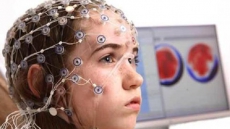Compared to men with no baldness in their 40s, men with a specific pattern of baldness at age 45 have a 40 percent increased risk of developing aggressive prostate cancer later in life, claims new research.
"Our study found an increased risk for aggressive prostate cancer only in men with a very specific pattern of hair loss - baldness at the front and moderate hair-thinning on the crown of the head - at age 45," said senior study author Michael B. Cook, an investigator at the National Cancer Institute in Bethesda, Maryland.
"But we saw no increased risk for any form of prostate cancer in men with other hair-loss patterns," Cook added.
Researchers analysed male pattern baldness in relation to prostate cancer risk in a cohort of 39,070 men from the US PLCO Cancer Screening Trial - aged 55-74 years at enrolment.
The men received a questionnaire that asked them to recall what their hair-loss patterns were at age 45 using a pictorial tool.
During follow-up, 1,138 prostate cancer cases were diagnosed, 51 percent of which were aggressive.
Men who had a specific pattern of baldness, frontal and moderate crown, were 40 percent more likely to develop aggressive prostate cancer, compared to men who had no baldness.
The study supports earlier research suggesting that male pattern baldness and prostate cancer may be linked.
"While our data show a strong possibility for a link between the development of baldness and aggressive prostate cancer, it's too soon to apply these findings to patient care," Cook stressed.
Emerging evidence suggests that prostate cancer and male pattern baldness are both connected to increased levels of male sex hormones (androgens) and androgen receptors - supporting the idea of a biological link between baldness and prostate cancer development and progression.
The paper appeared in the Journal of Clinical Oncology.






